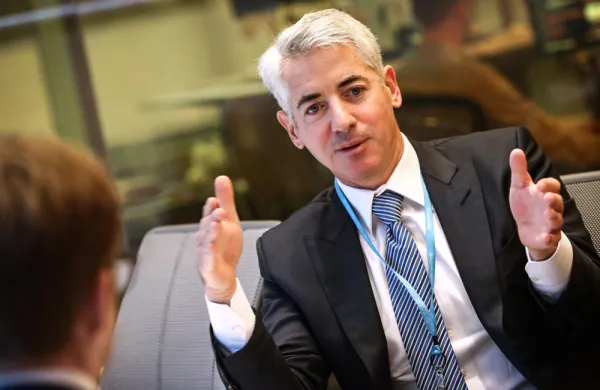Yale University's endowment has offered a rebuttal to Warren Buffett and other proponents of low-fee, passive investments.
In its 2017 annual report, released this week, the Ivy League school's investment office argued in favor of the active management strategies long employed by chief investment officer David Swensen and his staff. The top ten U.S. university endowments "amaze," Yale said in the report. "Their well-diversified portfolios crush the returns produced by U.S. stocks."
The argument came in response to Buffett's 2016 investor letter, which suggested that endowments and other institutional investors would be better off investing in the Standard & Poor's 500 index. According to the Yale report, the "superior results of Yale and a number of peers strongly suggest that active management can be a powerful tool for institutions that commit the resources to achieve superior, risk-adjusted investment results."
For the 20-year period ending June 30, Yale's endowment earned a 12.1 percent annualized return, beating its benchmark Wilshire 5000 stock index, which gained 7.5 percent. A passive portfolio with a 60 percent stock allocation and 40 percent in bonds, meanwhile, had a 20-year return of 6.9 percent.
According to the report, Yale's outperformance of the 60/40 portfolio added $27.5 billion in increased endowment value and support for the university operating budget.
"In advocating the adoption of a passive indexing strategy, Buffett provides sound advice for the vast majority of individuals and institutions that are unable (or unwilling) to commit the resources (human and financial) necessary for active management success," Yale said in the report. "Yet, Buffett's advice is not appropriate for the cohort of endowments that possess the capabilities to pursue successful active management programs."
This cohort includes Princeton University and Massachusetts Institute of Technology, each led by Yale endowment alums, as well as Duke University and the University of Virginia. They succeed because of their "common commitment to diversification, equity orientation, and active management, employing a heavy dose of alternative assets," and "strong, dedicated, and skilled investment staffs," Yale said in the report.
[II Deep Dive: How Yale’s Endowment Negotiates Fees]
Yale's endowment, for instance, said it had 75.1 percent of its portfolio invested in alternatives in June, including a 25.1 percent "absolute return" allocation and 17.1 percent commitment to venture capital. Leveraged buyout funds made up 14.2 percent of the portfolio, while real estate investments accounted for 10.9 percent. Only 3.9 percent of the endowment was invested in domestic equities, well below the average university endowment's 20.7 percent allocation.
Yale's annual report acknowledged that "long-term investment success begins with the identification of top-tier managers," noting that its investment staff "searches rigorously to find exceptional managers who demonstrate a sound investment philosophy, a passion for investing, and a competitive edge."
While Yale doesn't use the S&P 500 as a benchmark for its portfolio, its endowment has outperformed the index over the past couple decades. The S&P 500, which tracks the performance of large U.S. companies, had an annualized return of about 5 percent in the 20 years through June, or around 7 percent with dividends reinvested.
Based on the "fabulous returns" of endowments employing Yale-like investment models, the investment office said it expects its strategy "will work for decades to come."







